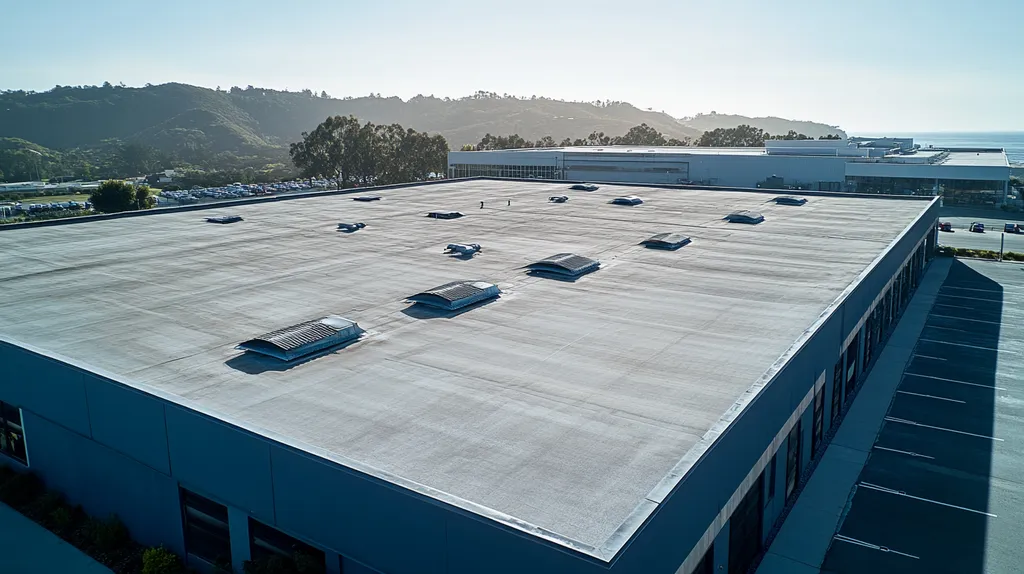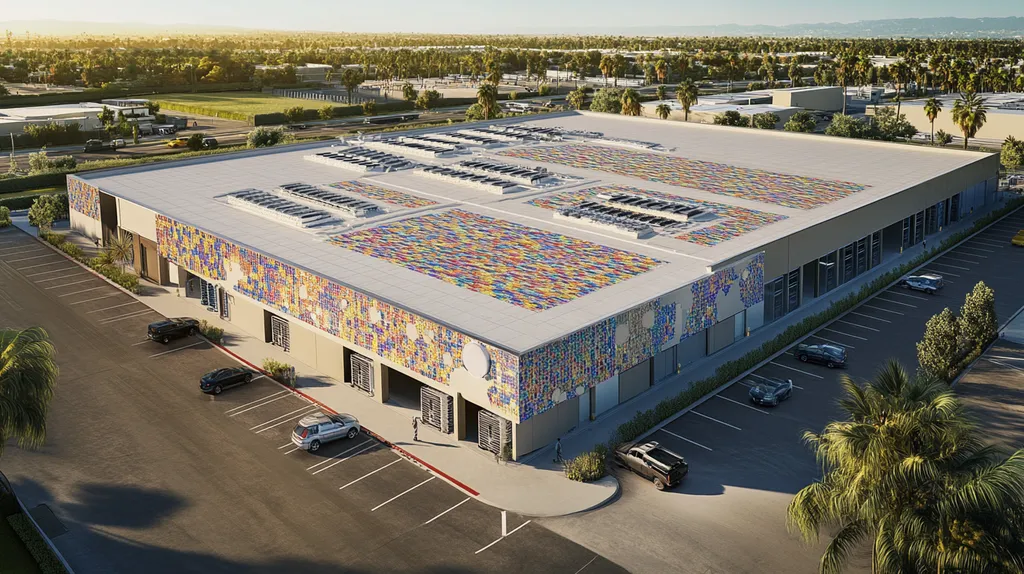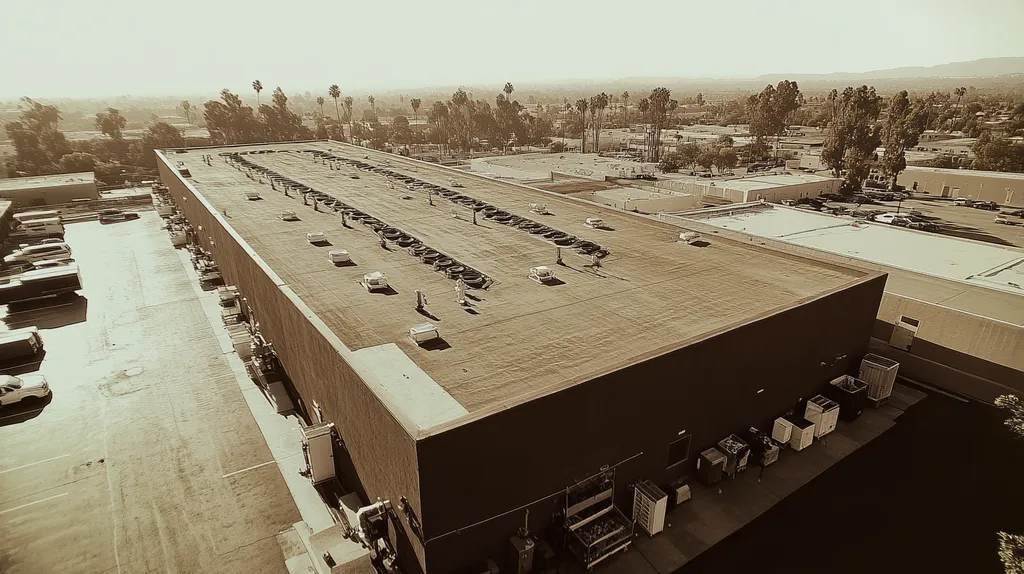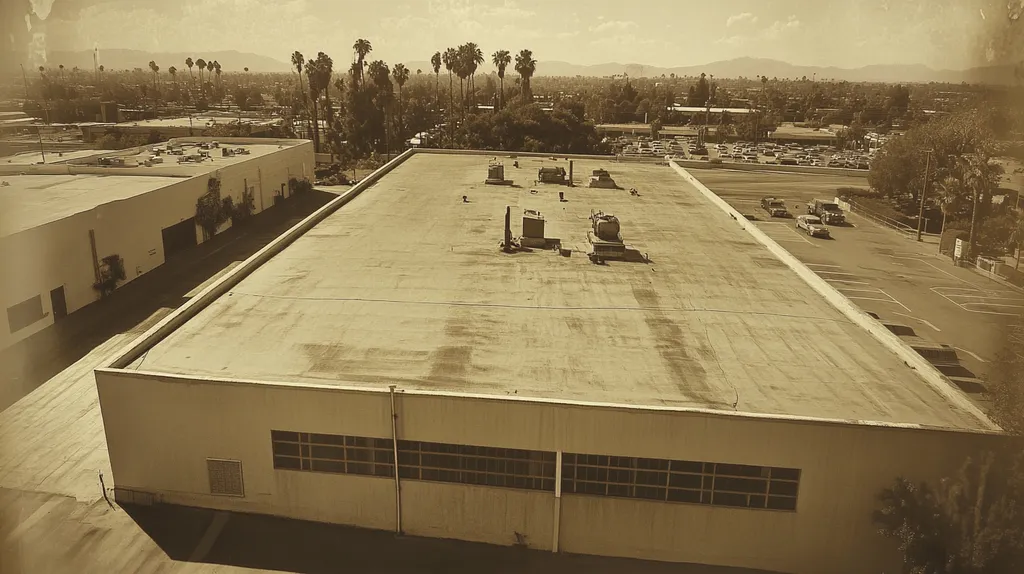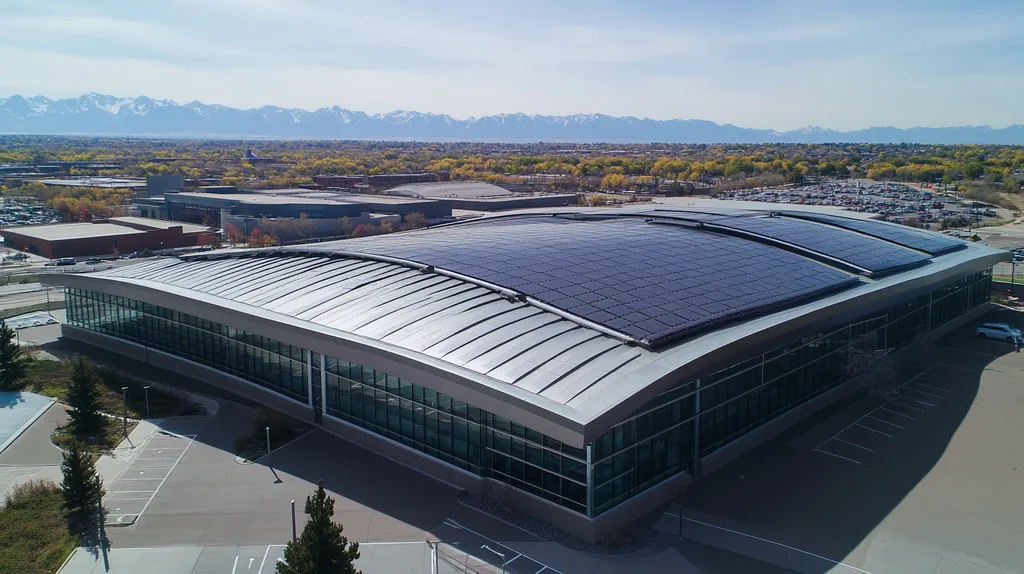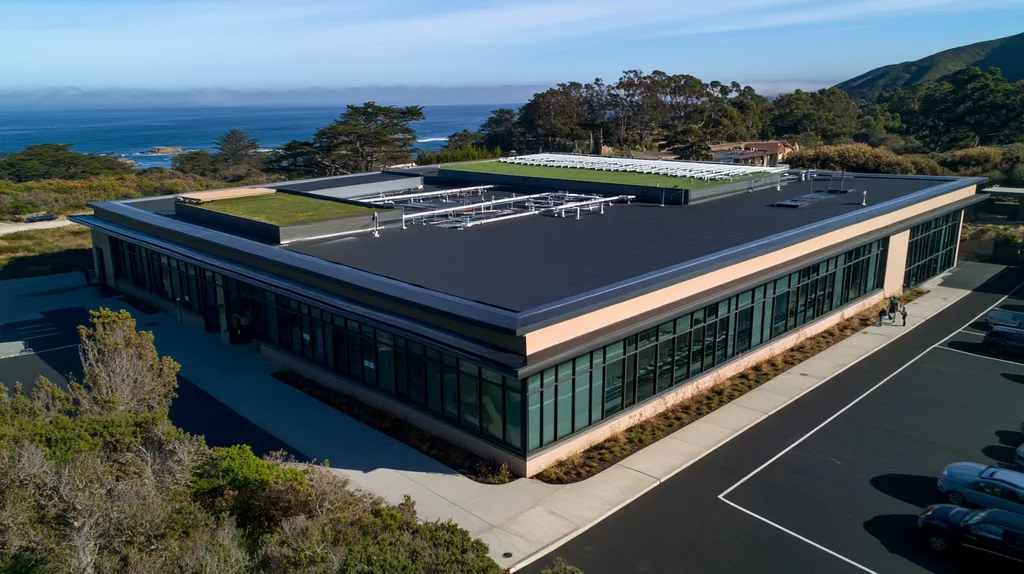In today’s industrial facilities, roof coating failures can trigger catastrophic cascading effects, with replacement costs soaring above $15 per square foot and emergency repairs often exceeding $100,000. Recent industry studies show that 40% of industrial roof coatings fail prematurely due to preventable factors.
From environmental stressors and material selection to application methods and maintenance protocols, multiple critical factors determine coating longevity. Understanding these elements is essential for facility managers seeking to maximize their roofing investment.
This comprehensive guide examines the key variables affecting industrial roof coating performance, providing actionable insights for extending service life while minimizing long-term costs.
SECTION 1: FUNDAMENTAL CONCEPTS
In today’s challenging economic environment, the condition of industrial roofing systems can make or break a facility’s operational budget. A compromised roof coating can lead to extensive damage, soaring energy costs, and potential production disruptions. The National Roofing Contractors Association reports that roof-related problems account for over 40% of all building-related litigation, highlighting the critical importance of understanding coating fundamentals.
Understanding Roof Coating Types and Properties
The lifespan of industrial roof coatings can vary dramatically from 5 to 20 years, depending on the coating type selected and environmental conditions. Regular maintenance and proper application techniques are essential factors in maximizing coating longevity. (source: Nationwide Coatings)
Each coating type offers distinct advantages for specific applications. Acrylic coatings provide excellent UV resistance and affordability, while silicone coatings excel in extreme weather conditions and offer superior waterproofing capabilities.
Polyurethane coatings deliver outstanding impact resistance and chemical protection, making them ideal for facilities with high foot traffic or exposure to industrial emissions.
Performance characteristics such as elongation, tensile strength, and adhesion properties must align with the facility’s specific requirements and environmental conditions to ensure optimal protection.
Impact of Environmental Stressors on Coating Longevity
UV radiation represents one of the most significant threats to coating integrity, causing molecular breakdown and degradation over time. This impact is particularly severe in regions with high sun exposure and elevated temperatures.
Temperature fluctuations create expansion and contraction cycles that stress coating systems. These thermal movements can lead to coating fatigue and eventual failure if not properly accounted for in the selection process.
Chemical exposure from industrial processes, acid rain, and air pollution can accelerate coating deterioration. Facilities must consider their specific environmental conditions when selecting coating systems.
Wind-driven debris and mechanical damage from maintenance activities can compromise coating integrity, necessitating regular inspections and prompt repairs to prevent system failure.
Role of Surface Preparation in Coating Performance
Proper surface preparation directly correlates with coating adhesion and long-term performance. Even minor contamination can create weak points in the coating system, leading to premature failure.
Surface profile requirements vary by coating type and manufacturer specifications. Testing for moisture content, surface pH, and profile depth ensures optimal conditions for coating application.
Identifying and addressing underlying substrate issues before coating application prevents future complications. This includes repairing cracks, securing loose fasteners, and treating corrosion.
Environmental conditions during surface preparation and coating application must fall within manufacturer-specified parameters. Temperature, humidity, and dew point all play crucial roles in coating success.
SECTION 2: SYSTEM COMPONENTS
Industrial roof coating systems represent a significant investment, with failure points potentially leading to catastrophic damage costing hundreds of thousands in repairs. Understanding the interplay between coating materials, primers, sealants, and substrates is crucial for maximizing protection and minimizing long-term costs. Recent industry data shows that improper component selection or installation accounts for over 60% of premature coating failures.
Selecting Appropriate Roof Coating Materials
Roof coating selection directly impacts the performance and longevity of the entire roofing system. Materials must match both the facility’s operational requirements and local environmental conditions to ensure optimal protection.
Each coating type offers distinct performance characteristics. Silicone coatings provide superior ponding water resistance but may accumulate dirt over time. Polyurethane systems offer excellent impact resistance but require specific application conditions.
Chemical exposure from industrial processes demands specialized coating formulations. Facilities must evaluate their specific exposure risks, from acid rain to manufacturing emissions, when selecting coating materials.
Wind uplift resistance and flexibility requirements vary by geographic location and building height. Higher elevations and coastal areas typically require more robust coating systems with greater tensile strength.
Integration of Primers and Sealants in Coating Systems
Proper primer selection establishes the foundation for coating adhesion. Different substrates require specific primer formulations to achieve maximum bond strength and prevent delamination.
Sealants serve as critical transition points between different roofing components. These areas often experience the greatest stress and movement, making proper material selection and application essential.
Temperature fluctuations can affect primer cure times and sealant flexibility. Application schedules must account for seasonal variations to ensure optimal curing conditions.
Regular inspection of primer and sealant integrity helps prevent coating system failure. Identifying and addressing issues early can extend the overall system lifespan significantly.
Substrate Compatibility and Its Influence on Durability
Substrate composition directly affects coating adhesion and performance. Metal roofs require different preparation methods and coating formulations than concrete or modified bitumen surfaces.
Surface profile measurements help determine appropriate coating thickness. Insufficient coating thickness over rough substrates can lead to premature failure and reduced protection.
Moisture content in substrates can compromise coating adhesion. Testing and preparation procedures must account for both surface and subsurface moisture conditions.
Age and condition of the substrate influence coating selection and expected performance. Older substrates may require additional preparation or specialized coating systems to achieve desired results.
SECTION 3: IMPLEMENTATION METHODS
Implementation methods can make or break an industrial roof coating’s performance, with research showing that improper application reduces coating lifespan by up to 65%. Beyond material selection, the success of a coating system depends heavily on preparation, application technique, and curing conditions. For facility managers, understanding these critical factors can mean the difference between a coating that lasts 20 years and one that fails prematurely.
Best Practices for Surface Cleaning and Preparation
Surface preparation represents the foundation of any successful coating application. Contamination from industrial processes, environmental pollutants, and existing coating residue must be completely removed to ensure proper adhesion.
Modern cleaning techniques include pressure washing, chemical cleaning, and mechanical abrasion. Each substrate type requires specific preparation methods – metal surfaces need degreasing and rust removal, while single-ply membranes require specialized cleaning agents.
Moisture testing before coating application is critical. Even slight dampness in the substrate can lead to coating failure through blistering and delamination.
Environmental conditions during preparation must be closely monitored. Temperature, humidity, and dew point all affect surface preparation effectiveness and subsequent coating adhesion.
Techniques for Uniform Coating Application
Application technique directly impacts coating performance and longevity. Different coatings require specific application methods – some perform better with spray application, while others need roller or brush application for optimal results.
Spray application provides the most uniform coverage but demands skilled operators and proper equipment. Wind conditions, overspray protection, and equipment maintenance all affect application quality.
Multiple thin coats typically outperform single thick applications. This approach allows better cure between coats and helps identify potential problem areas early in the process.
Coverage rates must be carefully monitored during application. Too thin or too thick applications can compromise coating performance and reduce system longevity.
Curing Processes and Their Effect on Coating Lifespan
Proper curing conditions significantly impact coating performance. Temperature extremes during curing can affect chemical crosslinking, potentially reducing coating flexibility and adhesion.
Different coating types require specific curing conditions and times. Some coatings need extended cure times in controlled humidity, while others can tolerate varied environmental conditions.
Early exposure to moisture or foot traffic during curing can permanently damage coating integrity. Facility operations must be coordinated to protect newly applied coatings during the critical curing phase.
Regular inspections during curing help identify potential issues before they become major problems. Early detection of curing abnormalities allows for timely corrective actions.
SECTION 4: MAINTENANCE REQUIREMENTS
The difference between a roof coating that lasts 5 years versus 20 years often comes down to maintenance practices. Studies show that properly maintained coatings can extend service life by up to 300%, while neglected systems frequently fail prematurely. Understanding and implementing proper maintenance protocols represents one of the most cost-effective ways to protect your facility’s roofing investment and prevent catastrophic failures.
Scheduled Inspection Protocols for Early Defect Detection
A comprehensive inspection program forms the foundation of effective roof coating maintenance. Implementing bi-annual professional inspections helps identify potential issues before they develop into serious problems that compromise the coating’s integrity.
Modern inspection techniques utilize advanced technologies like infrared scanning and moisture detection equipment to locate hidden problems. These tools can identify subsurface moisture and coating degradation long before visible signs appear.
Documentation plays a crucial role in tracking coating performance over time. Detailed inspection reports should include photographs, measurements, and specific observations about coating condition, allowing facility managers to track degradation patterns.
Special attention must focus on high-stress areas like flashings, penetrations, and drainage points. These zones typically show the first signs of coating failure and require more frequent monitoring.
Cleaning Procedures to Preserve Coating Integrity
Regular cleaning prevents the accumulation of harmful deposits that can degrade coating performance. Industrial environments especially require quarterly cleaning to remove chemical residues, airborne pollutants, and organic matter.
The lifespan of roof coatings can range from 5 to 20 years, with proper cleaning and maintenance serving as key factors in maximizing longevity. (source: Nationwide Coatings)
Cleaning methods must match coating type specifications to prevent damage. Low-pressure washing with appropriate cleaning solutions helps preserve coating integrity while effectively removing contaminants.
Scheduling cleaning operations during optimal weather conditions ensures proper drying and prevents water infiltration. Morning hours typically provide the best conditions for cleaning activities.
Repair and Recoating Strategies to Extend Service Life
Immediate attention to minor coating damage prevents escalation into major problems. Establishing repair protocols that specify appropriate materials and techniques ensures consistent repair quality.
Recoating decisions should balance remaining coating life against facility protection needs. Strategic recoating of high-wear areas can extend overall system performance without requiring complete replacement.
Weather conditions significantly impact repair success rates. Temperature, humidity, and precipitation forecasts must guide scheduling of repair activities to ensure proper curing.
Integration of repairs with routine maintenance activities maximizes efficiency and minimizes facility disruption. Coordinating these activities reduces overall maintenance costs while ensuring optimal coating protection.
SECTION 5: PERFORMANCE METRICS
Understanding and measuring roof coating performance has become critical as facility repair costs continue to rise. Industry data shows that premature coating failures can increase operational costs by up to 300% through emergency repairs, increased energy consumption, and production disruptions. By tracking key performance metrics, facility managers can predict coating lifespan, optimize maintenance schedules, and prevent catastrophic failures.
Measuring Reflectivity and UV Resistance Efficiency
Solar reflectivity directly impacts building energy costs, with high-performance coatings reducing cooling expenses by up to 30%. Regular testing using solar reflectometers helps track coating degradation and predict when recoating may become necessary.
UV resistance testing through accelerated weathering chambers simulates years of sun exposure in weeks. This data helps facility managers anticipate coating breakdown before visible damage occurs.
Temperature monitoring across the roof surface identifies areas where reflectivity has degraded. Hot spots often indicate coating failure points that require immediate attention.
Modern thermal imaging technology allows precise mapping of coating performance variations. These assessments guide targeted maintenance efforts and help optimize recoating schedules.
Assessing Adhesion Strength and Elasticity
Pull-off adhesion testing provides quantifiable data about coating bond strength. Results below 200 psi typically indicate potential delamination risks requiring immediate attention.
Elongation testing measures a coating’s ability to stretch without breaking. High-performance coatings should maintain at least 100% elongation even after years of environmental exposure.
Impact resistance testing simulates hail and falling debris damage potential. Coatings showing early brittleness or cracking during impact tests may require accelerated replacement schedules.
Regular adhesion testing at critical points like seams and penetrations identifies weak spots before failure. This targeted approach helps prevent water infiltration at vulnerable locations.
Monitoring Weathering and Wear Through Quantitative Tests
Accelerated weathering chambers expose coatings to concentrated UV radiation, moisture cycles, and temperature extremes. These tests compress decades of exposure into months, providing early warning of potential failures.
Thickness measurements using ultrasonic gauges track coating erosion rates. Understanding wear patterns helps optimize maintenance schedules and predict remaining service life.
Chemical resistance testing ensures coatings maintain protection against facility-specific exposures. Regular testing of coating samples from high-exposure areas validates continued performance.
Digital mapping of test results creates a comprehensive performance profile over time. This data-driven approach allows facility managers to make informed decisions about maintenance and replacement timing.
SECTION 6: OPTIMIZATION STRATEGIES
Industrial roof coating optimization has become a critical focus as replacement costs continue to surge past $15 per square foot. With aging infrastructure and increasingly volatile weather patterns, the difference between optimized and standard coating systems can mean hundreds of thousands in premature replacement costs. Research shows that properly optimized coating systems consistently achieve 15-20 year lifespans, while poorly optimized systems often require replacement within 5-7 years.
Enhancing Longevity Through Material Selection and Layering
Commercial roof coating systems, when properly selected and layered, can extend roof lifespan by 10-15 years through enhanced protection against UV damage, leaks, and weathering. Strategic material selection and application methods significantly impact long-term performance and durability. (source: The Trinity Way)
Material compatibility between layers demands careful consideration. Incompatible materials can create chemical reactions that accelerate degradation rather than prevent it.
Each coating layer serves a specific protective function. Base layers typically focus on adhesion and waterproofing, while top layers provide UV protection and weather resistance.
Application thickness must be precisely controlled between layers. Too thin compromises protection, while too thick can lead to adhesion failures and waste materials.
Implementing Energy Efficiency Improvements with Reflective Coatings
Reflective coating technology has advanced significantly, now capable of reducing surface temperatures by up to 80 degrees Fahrenheit during peak summer conditions. This temperature reduction directly correlates to extended coating lifespan.
Modern reflective coatings maintain their solar reflectance index (SRI) for longer periods, requiring less frequent recoating. High-performance products can retain 80% of their initial reflectivity after three years of exposure.
Strategic application timing maximizes reflective coating performance. Application during moderate temperatures ensures proper curing and optimal adhesion characteristics.
Regular cleaning protocols preserve reflective properties. Accumulated dirt and debris can reduce reflectivity by up to 50%, diminishing both energy efficiency and protective capabilities.
Preventative Maintenance Programs to Minimize Degradation
Systematic inspection protocols identify potential issues before they compromise coating integrity. Monthly visual inspections combined with bi-annual detailed assessments create an effective early warning system.
Data tracking through digital platforms enables predictive maintenance scheduling. Historical performance data helps optimize maintenance intervals and identify patterns of degradation.
Strategic repair timing prevents minor issues from escalating. Addressing small defects immediately can prevent moisture infiltration and substrate damage.
Environmental monitoring guides maintenance scheduling. Temperature, humidity, and precipitation forecasts help determine optimal timing for maintenance activities.
The Bottom Line
With industrial roof coating failures costing facilities up to $100,000 in emergency repairs, understanding and implementing proper longevity factors has never been more critical.
Research demonstrates that optimized coating systems routinely achieve 15-20 year lifespans, while poorly managed systems fail within 5-7 years.
Success depends on careful material selection, meticulous surface preparation, proper application techniques, and systematic maintenance protocols.
By implementing comprehensive inspection programs, utilizing advanced testing methods, and maintaining detailed performance records, facility managers can maximize their coating investment and prevent catastrophic failures.
The difference between coating success and failure ultimately lies in understanding and controlling these critical factors throughout the system’s lifecycle.
FREQUENTLY ASKED QUESTIONS
Q. What factors influence the longevity of a commercial roof coating?
A. The longevity of a roof coating depends on coating type, environmental conditions, and maintenance practices. Regular maintenance and proper application techniques significantly enhance lifespan. Understanding coating fundamentals is crucial for effective investment in roofing systems.
Q. How does substrate type affect industrial roof coating performance?
A. The substrate type directly impacts adhesion and performance of the coating. Each substrate requires specific preparation methods and coating formulations to ensure lasting protection. Proper compatibility between coating and substrate optimizes durability.
Q. What are best practices for applying commercial roof coatings?
A. Proper surface cleaning and preparation are vital for successful coating application. Techniques like pressure washing and using the right materials enhance performance. Consistent monitoring of application thickness ensures durability and adherence.
Q. How can maintenance extend the life of industrial roof coatings?
A. Routine maintenance, including inspections and cleaning, can significantly extend service life. Regular monitoring of high-stress areas helps identify issues early, allowing for timely repairs. This proactive approach prevents costly future failures.
Q. How do I measure the performance of my industrial roof coating?
A. Performance can be measured through metrics like reflectivity, adhesion strength, and wear testing. Utilizing technology such as infrared scanning can help identify weaknesses. Tracking these metrics helps optimize maintenance and replacement timing.
Q. What are optimization strategies for industrial roof coatings?
A. Optimizing coating systems involves careful material selection and layering. Including reflective coatings can enhance energy efficiency, while regular maintenance ensures long-lasting protection. A proactive approach minimizes replacement costs and prolongs system life.
Q. How do weather conditions affect roof coating application?
A. Weather conditions like temperature, humidity, and moisture levels can significantly influence application success. Extreme weather can harm cured coatings, while optimal conditions enhance adhesion. Scheduling applications during mild weather maximizes effectiveness.

